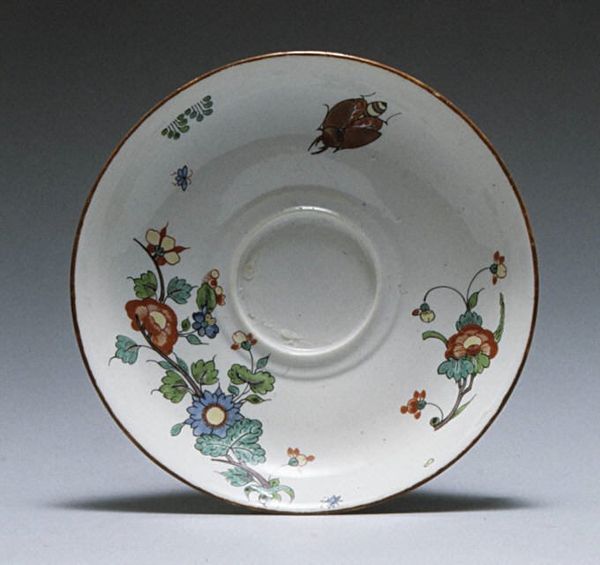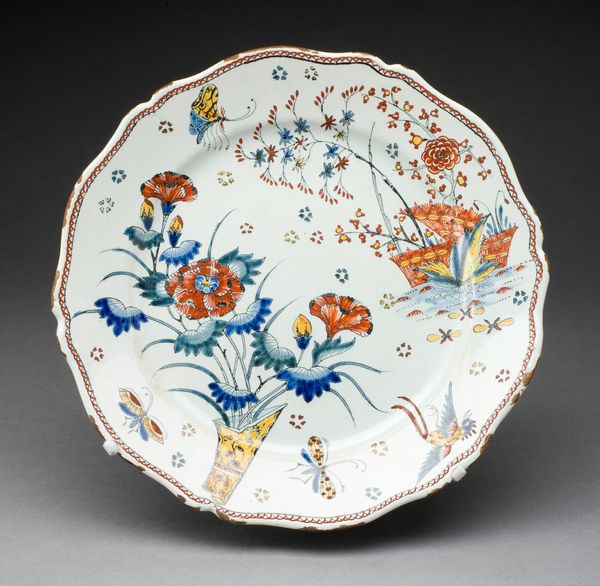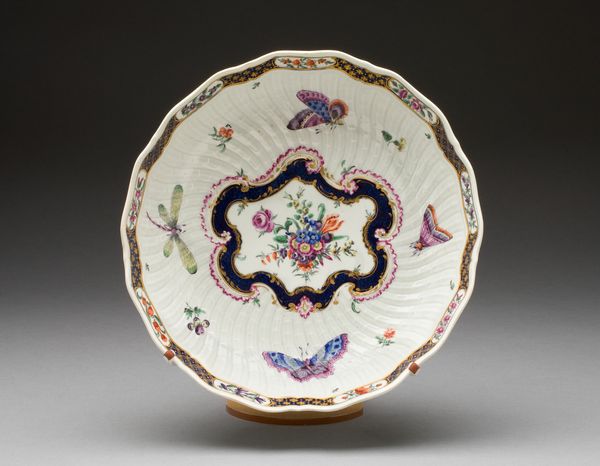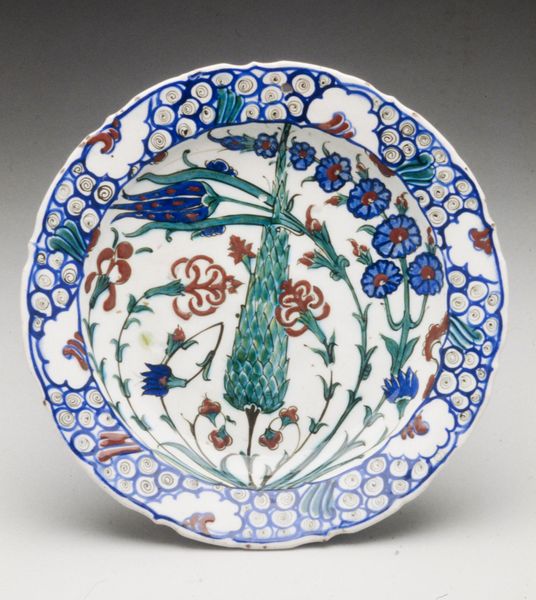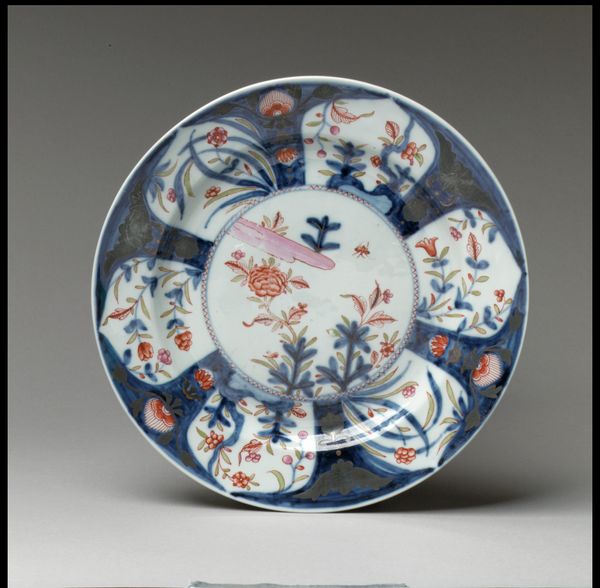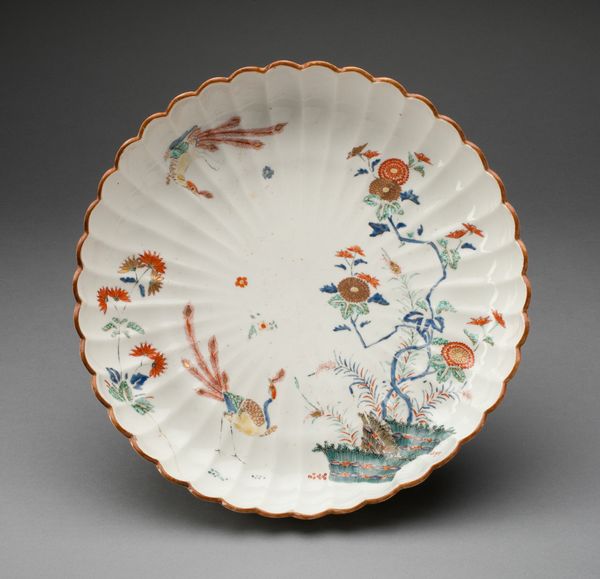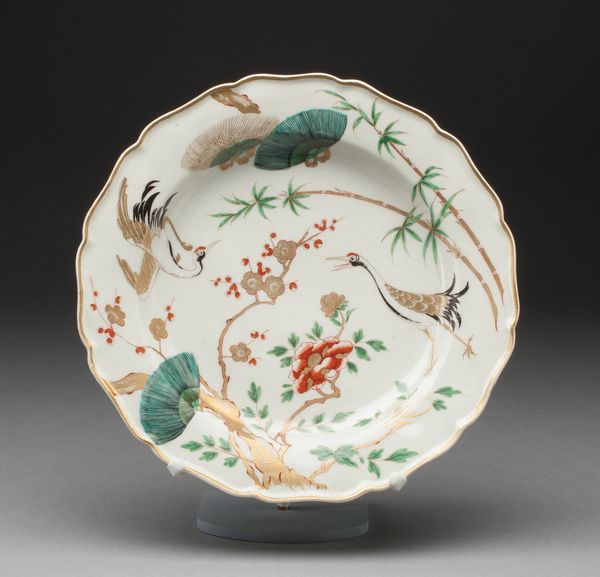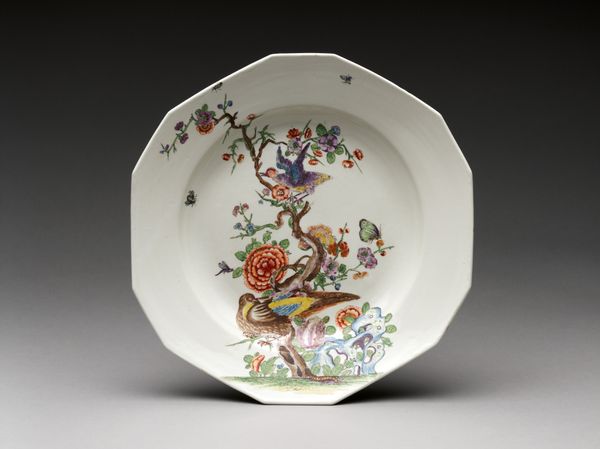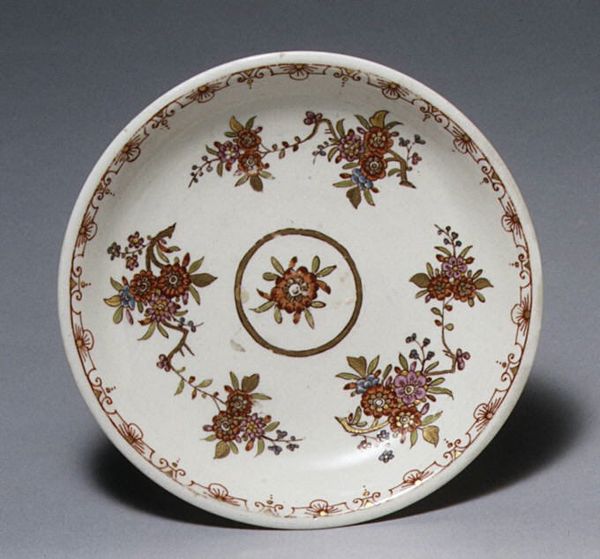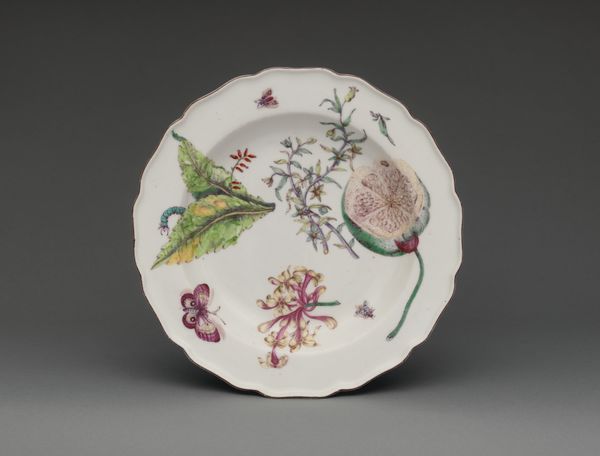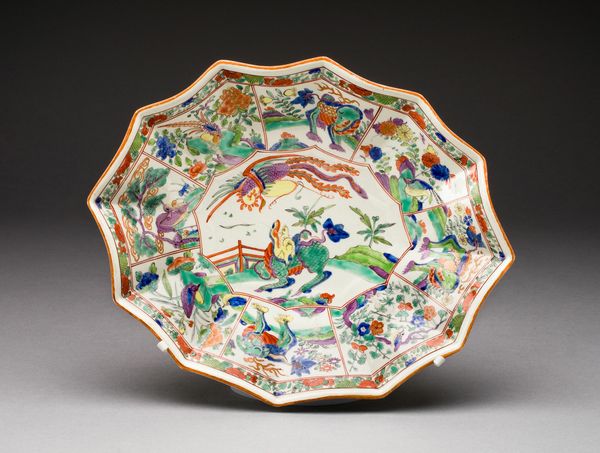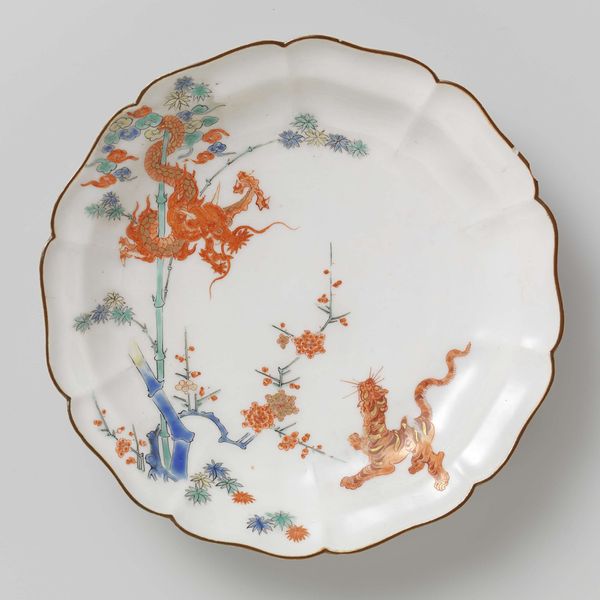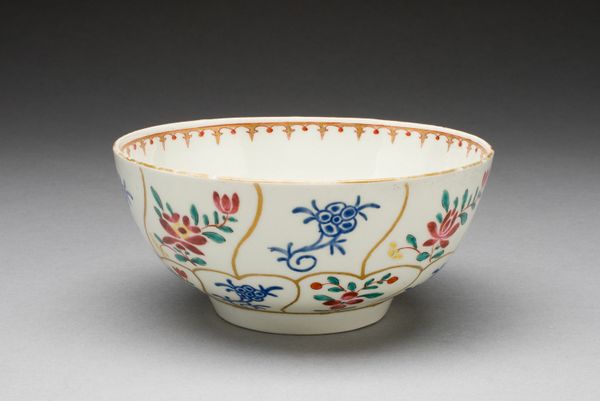
ceramic, porcelain, sculpture
#
ceramic
#
porcelain
#
sculpture
#
ceramic
#
decorative-art
#
rococo
Dimensions: Diameter: 4 11/16 in. (11.9 cm)
Copyright: Public Domain
Curator: Here we have an exquisite "Saucer" produced by Chantilly, dating roughly between 1730 and 1745. It's currently housed here at the Metropolitan Museum of Art. Editor: It feels remarkably delicate. The off-white porcelain is almost translucent, and the floral decoration, while vivid, doesn't overwhelm the object. Curator: These refined ceramic works emerged in a moment of fierce competition and colonial trade. European powers sought to emulate the prized porcelain production of East Asia, often appropriating aesthetic traditions in the process. Chantilly, specifically, was known for its imitations of Japanese Kakiemon wares. Editor: I can see the Eastern influence. The placement of the floral elements, asymmetrical and sparse, directs the eye in a circular path around the object. The negative space is as important as the decoration itself. It has an open, airy feeling. Curator: Precisely. We also should consider the class dynamics involved. Items like this saucer, delicate and imported, signified elevated status. It's indicative of the aristocracy, participating in the global circulation of commodities that depended on both known trade routes and hidden histories of exploitation and extraction. Editor: I hadn't considered the global dimension so acutely, but that makes sense. I was more focused on how the craftsman balanced color and form. The use of cobalt blue, iron red, and copper green, creates a lovely, understated harmony. It is perfectly Rococo, yet it speaks of a cross-cultural dialogue. Curator: Exactly, the appeal transcends mere aesthetics. Everyday objects, such as this humble saucer, present us with compelling access points for engaging with much larger forces at play: colonialism, power, cultural exchange. Editor: It seems we've moved between the intimate brushstrokes and macroeconomics, which shows how rewarding close observation can be. Curator: I agree, art history is inherently interdisciplinary, illuminating intricate entanglements.
Comments
No comments
Be the first to comment and join the conversation on the ultimate creative platform.
